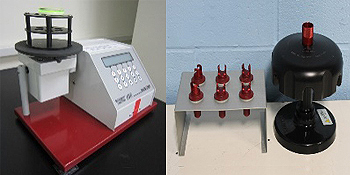
Nanolyzer, high-pressure homogenizer is equipped with a hydraulic power system, which supplies pressurized hydraulic oil to a single acting intensifier pump. The intensifier pump amplifies the hydraulic pressure and transfers it to the liquid pressure of the product. Using high pressure (10-25 Kpsi) to squeeze the cells from the micro-flow channel after the rapid decompression. The pressurized product enters the diamond chamber with fixed geometrically micro-channels, causing the product to accelerate to high velocity which brings about the desired results of shear, impact, and cavitation. NanoLyzer is widely applied to particle size reduction, such as bacteria, cells, yeast, etc., to release the intracellular material.











